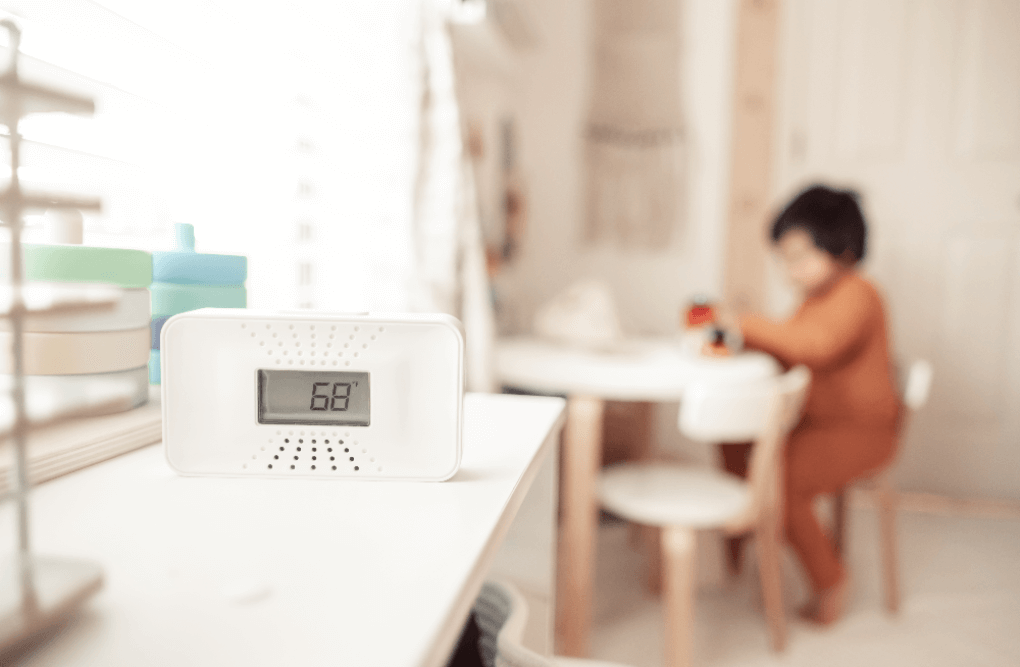Carbon Monoxide Safety Tips

What is carbon monoxide?
Carbon monoxide (CO) is an invisible, odorless gas. It is a common by-product of incomplete combustion, produced when fossil fuels (like oil, gas or coal) burn. Because you can't see, taste or smell it, carbon monoxide can endanger your safety and well-being before you know it's there. Exposure to lower levels over time can also make you sick.
Where does carbon monoxide come from?
Carbon monoxide can be produced by the combustion that occurs from a fuel-burning appliance like a furnace, clothes dryer, range, oven, water heater, or space heater. When appliances and vents work properly, the trace amounts of CO produced are typically not dangerous and are normally safely vented outside your home.
Problems may arise when something goes wrong. An appliance can malfunction, a furnace heat exchanger can crack, vents can clog, or debris may block a chimney or flue. Fireplaces, wood-burning stoves, gas heaters, charcoal grills, or gas logs can produce unsafe levels of CO if they are unvented or not properly vented. Exhaust can seep into the home from vehicles left running in an attached garage. All these things can cause a CO leak in the home. Following our carbon monoxide safety tips will help to prevent a leak and potential CO poisoning.
Why is carbon monoxide so dangerous?
Carbon Monoxide robs you of what you need most: oxygen, which is carried to your cells and tissue by the hemoglobin in your blood. If you inhale CO, it quickly bonds with hemoglobin and displaces oxygen. This produces a toxic compound in your blood called carboxyhemoglobin (COHb). Carboxyhemoglobin produces flu-like symptoms, for example: headaches, fatigue, nausea, dizzy spells, confusion, and irritability. Since symptoms are similar to the flu, carbon monoxide poisoning can be misdiagnosed. As levels of COHb rise, victims suffer vomiting, loss of consciousness, and eventually brain damage or death.
Who is at risk from carbon monoxide poisoning?
Everyone is at risk from carbon monoxide poisoning because everyone needs oxygen to survive. Medical experts believe some people may be more vulnerable to CO poisoning: unborn babies, infants, children, seniors, and people with heart and lung problems due to higher metabolic rates, emphasizing the significance of safety precautions for all.
How can I help protect against carbon monoxide poisoning?
Having an early warning is important. Install carbon monoxide alarms outside each sleeping area, inside each bedroom and on every level of the home, including the basement, as recommended by the National Fire Protection Association (NFPA). Have a qualified appliance technician check all fuel-burning appliances, venting and chimney systems at least once a year, or as recommended by the manufacturer. It is critical to follow these carbon monoxide safety tips so you can identify potential dangers and take measures to help protect against this serious threat.
We recommend following these CO safety tips and guidelines:
- Have fuel-burning heating equipment and chimneys inspected by a qualified professional every year before cold weather arrives. During the heating season, clear filters and filtering systems of dust and dirt.
- Be sure to open the flue for adequate ventilation when using a fireplace.
- Inspect the pilot lights on natural gas appliances to ensure that the flame is blue. When a flame is mostly yellow in color, it likely is producing CO.
- Clean out the lint and debris that may build up in the clothes dryer vent which leads to the outside of the house.
- Only use generators in a well-ventilated location outdoors away from windows, doors and vent openings.
- Use barbecue grills only outside and never indoors or in the garage.
- Never leave a car running in a garage, even for a couple of minutes even if the overhead garage door is open.
- Install a CO alarm outside each sleeping area, inside every bedroom, and on every level of the home, including the basement
- First Alert recommends replacing CO detectors every 5-7 years
Source: National Fire Protection Association